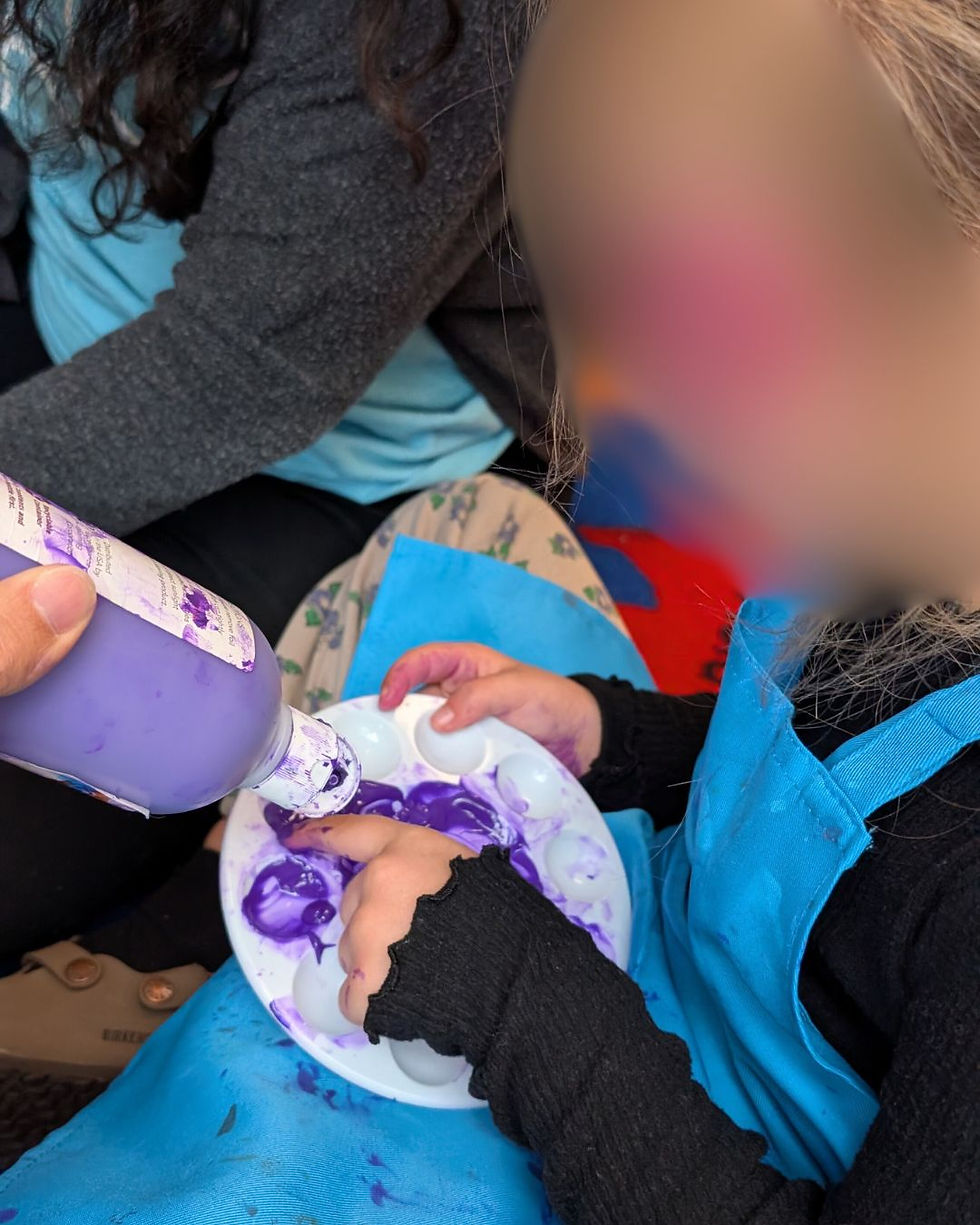Sensory Integration Therapist Near Me: Your Guide to Finding the Right Support for Your Child
- zahnltd
- Mar 1
- 5 min read

Introduction:
Sometimes, occupational therapists are the ones who teach children how to appropriately process sensory information. Look up online directories, local health clinics, or specialty centers to locate a therapist. The Child Mind Institute and Sensory Integration Education are two helpful resources for sensory processing issues.
Ask about a therapist’s credentials and read client reviews when choosing one. You can talk about your child’s specific needs during a preliminary consultation. An excellent therapist can dramatically change the daily life of a child and aid them in doing and contributing to activities they enjoy, thus improving their overall function.
What Is Sensory Integration Therapy?
It’s how and why the brain organizes and makes sense of “inputs” from the environment. Interrupting this process, though, can really affect your learning, behavior, and ability to regulate your emotions. Sensory integration therapy is one of the management techniques in children with Autism Spectrum Disorder(ASD) and Sensory Processing Disorder(SPD), where such issues are present.
Experience: Ask the therapist how much experience they have working with specific conditions and populations to ensure they’ll be a good fit for your needs.
Approach: Therapists work from different methods and philosophies. Knowing what they’re all about may help you find just the right-fitting one.
Read the Reviews: Go beyond your local area to see how well the therapist you are considering is doing with other patients; talk to parents or other people who’ve used the therapist you’re thinking of.

Read What is Sensory Integration Therapy Approach
Children with sensory processing concerns struggle with basic activities. To help navigate these challenges, therapists provide support in specific ways. Due to sensory overload, a child with sensory processing disorder may struggle with socialization. However, once children can socialize with both peers and adults at social events—and the number of people present is gradually reduced—they often engage more successfully.
The sensory processing system is closely connected to other disorders, such as anxiety and ADHD, as well as other behavioral challenges. Many children with sensory processing differences also experience anxiety or maladaptive behaviors. When sensory stimuli—such as touch, movement, and body stability—are properly regulated, children often exhibit calmer behaviors, which can improve their therapy outcomes.
There are several strategies occupational therapists use for sensory integration methods, such as:
Physical Workouts: Developing coordination and motor skills through activities like balance games and obstacle courses.
Environmental Modifications: Adjusting the sensory environment—such as light, sound, and texture—to create a more tailored and comfortable space.
Improved Quality of Daily Life: Overcoming challenges and experiencing accomplishments can lead to better focus on schoolwork, whether on a screen, paper, or other formats at home.
Social Interaction: Reduced anxiety, lower sensory overload, and improved social-emotional skills help individuals thrive in more challenging environments.

Sensory Integration Occupational Therapists | Find a Sensory Integration OT Near You:
Use Online Directories: Websites such as the American Occupational Therapy Association (AOTA) or local health directories can help you find qualified therapists nearby.
Therapy Institutions: Several clinics specialize in sensory integration therapy. Look for local services and see what they provide.
Pediatric Constellations: Use this matching app to find an Occupational Therapist that specializes in Sensory Integration if you live in San Antonio, TX.
Consultation: You will begin with an initial consultation to discuss your child’s individual needs. This session can give you a sense of the therapist’s style and how they work with your child.
Takeaways: When searching for a sensory integration therapist, keep certain key points in mind to ensure the best possible service for your child. Here are some things:
Qualifications:
Licensure:
Confirm that the therapist is a licensed OT (Occupational Therapist). In the United States, this means they have completed either a master's or doctoral degree in occupational therapy and have passed the National Board for Certification in Occupational Therapy (NBCOT) exam. Licensure requirements vary by state, so ensure the therapist is licensed to practice in yours.
Sensory Integration Cert:
Therapists who have completed specialized training in sensory integration therapy through a nationally accredited program (e.g., programs offered through Sensory Integration International (SII) or the Ayres Sensory Integration certification program) have a comprehensive understanding of sensory processing issues and the best treatment methods.
Continuing education:
Ask if the therapist participates in continuing education. Differences in therapy approaches may, in part, be due to some therapists being less up-to-date with the most effective research and methods available in sensory integration therapy.
Experience:
Child-Centered:
Work with a therapist who has extensive experience with children. Child therapy experts understand their developmental needs and can create an environment that is not only supportive but also stimulating enough for the child to express their thoughts and feelings effectively.
Therapeutic Modalities:
Find out what therapeutic modalities a therapist uses. It is important that the therapy be individualized to each child’s needs, including plenty of play-based components, lots of sensory-rich activities, and learning how to self-regulate their responses to sensory experiences.
Client Reviews:
Reviews:
Look up reviews from other parents looking for a therapist, and ask for details about their experience. Search for comments about how well the therapist relates to children, what types of progress clients have made, and how satisfied families have been with their therapy experience.
Online Reviews:
Google, Yelp or other health review sites. Look for commonalities in the feedback, such as the therapist’s tone, how empathetic they were, and how well they engaged the children.
Word of Mouth:
Don’t be shy about asking other parents, teachers, or pediatricians for recommendations. A personal recommendation is a sure path to finding trusted therapists with a track record of results.
Conclusion:
One effective tool to help someone with sensory processing challenges live their best life is sensory integration. Under the guidance of a trained therapist, individuals can learn skills that allow them to more effectively function in their environments. If you or someone you love could really benefit from this therapy, start to look for local professionals and treatment options. We will go through Sensory Integration Therapy Line up. This is specific to the devotee to carry through. The manifestations In Children Sensory integration therapy is conducted by specially trained occupational therapists who target deficits in sensory processing skills to increase function and enhance quality of life.
Now What? Easy At-Home Sensory Activity to Try!
If your child dislikes certain textures, you can help them get used to new sensations in a fun way!
Rescue the Animals! 🦁🐘🐻
What You Need:
Small animal toys (or any favorite small toys)
How to Play:
Hide the Animals – Gently press the animal toys into the play foam so they are partly covered.
Rescue Mission! – Encourage your child to dig through the foam to "save" the animals.
Use Tools – If they are unsure about touching the foam, offer a spoon or tweezers to start.
Bravery Challenge – Slowly encourage them to use their fingers as they get comfortable.
Why It Helps:
✔️ Combines a new texture with a favorite toy to make it fun!
✔️ Helps the brain get used to light touch in a safe way.
✔️ Keeps emotions calm by focusing on a playful goal.
Let your child go at their own pace and cheer them on for every rescue!




Comments